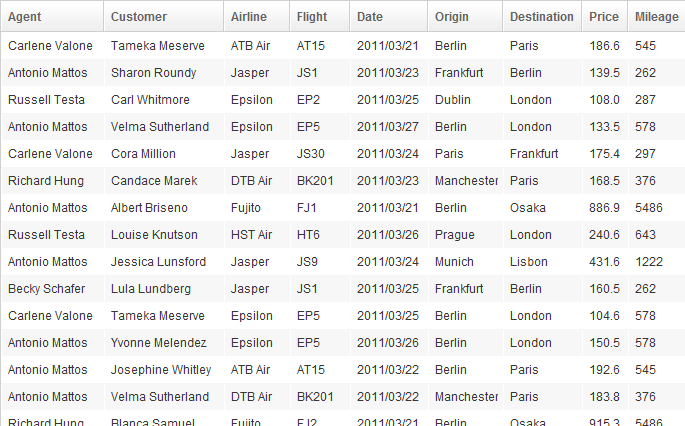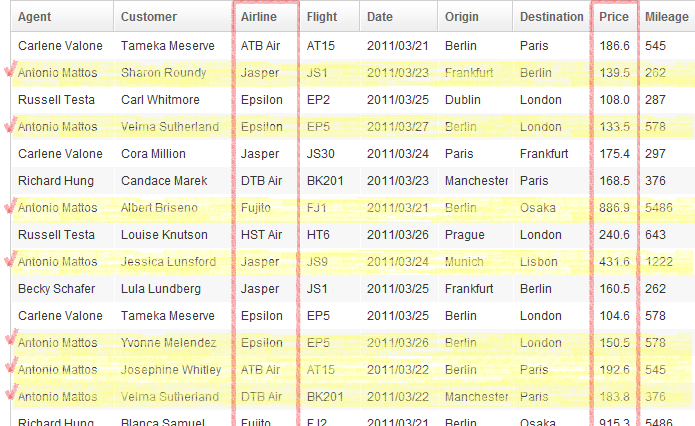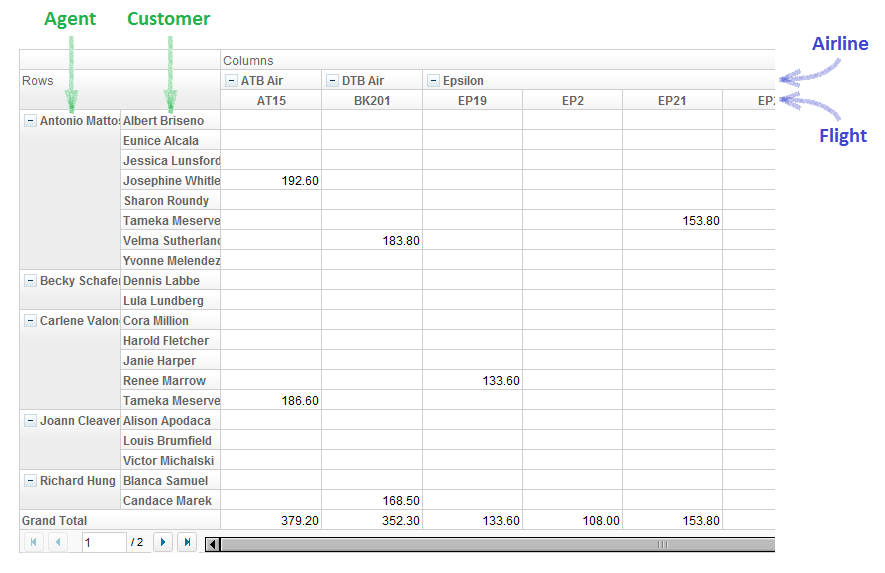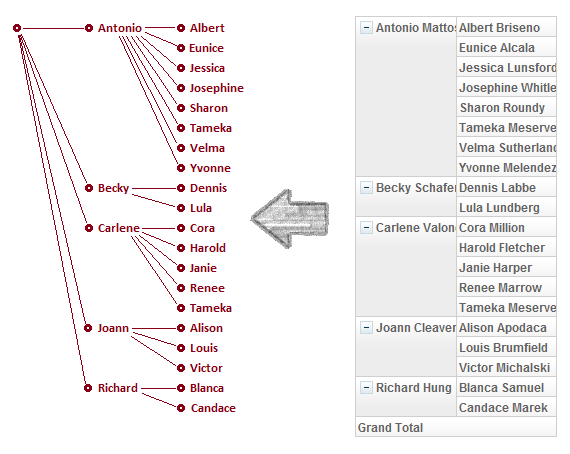Concept"
m |
|||
| Line 29: | Line 29: | ||
[[Image: ZKPivotEsn_work_pivot_06.png]] | [[Image: ZKPivotEsn_work_pivot_06.png]] | ||
| + | |||
| + | We call ''Agent, Airline'' and ''Price'' '''fields''', and more precisely speaking, ''Agent'' is a '''row field''', ''Airline'' is a '''column field''', and ''Price'' is a '''data field'''. | ||
==Row and column headers== | ==Row and column headers== | ||
| − | + | The computer screen is 2-dimensional after all, so what if we want to summarize data by more than 2 criteria? | |
| + | |||
| + | Pivottable can accept multiple fields on columns and rows. You can think of it as Auxheaders of Grid. For example, if you want to have ''Agent'' and ''Customer'' on the rows, ''Airline'' and ''Flight'' on the columns, this is what you will get: | ||
| + | |||
| + | [[Image: ZKPivotEsn_work_pivot_13.png]] | ||
| + | |||
| + | You can also think of row and column fields as categorization layers of data. On the X dimension, the data are categorized firstly by ''Airline'', then by ''Flight''. While on the Y dimension, they are categorized by ''Agent'' then ''Customer''. | ||
| + | Each of these two categories (row and column) has a tree structure. We call them '''row header tree''' and '''column header tree''', respectively. | ||
| + | |||
| + | [[Image: ZKPivotEsn_work_pivot_14.png]] | ||
| + | |||
<!-- open/close a node --> | <!-- open/close a node --> | ||
Revision as of 04:57, 29 March 2011
If you are not familiar with the concept of pivot table, this section will kindly guide you through.
The Basic
Suppose you have a table of data of flight ticket sales record like this,
and someone asks you "Hey, how did Antonio do this week? How much did he sell from each airline?"
You read through the table, highlight all entries with Antonio involved, categorize them by airlines, and sum up the selling prices.
This is a typical scenario when you work with business data, and this is where a pivot table comes into play.
For example, you can let Pivottable sums up all the selling prices per agent, per airline, and arrange agents on the row, airline on the column, then you automatically have the desired data summary on Antonio's row.
Taking a closer look, the number in each cell comes from summing up the values of all price entries of given agent and airline:
We call Agent, Airline and Price fields, and more precisely speaking, Agent is a row field, Airline is a column field, and Price is a data field.
Row and column headers
The computer screen is 2-dimensional after all, so what if we want to summarize data by more than 2 criteria?
Pivottable can accept multiple fields on columns and rows. You can think of it as Auxheaders of Grid. For example, if you want to have Agent and Customer on the rows, Airline and Flight on the columns, this is what you will get:
You can also think of row and column fields as categorization layers of data. On the X dimension, the data are categorized firstly by Airline, then by Flight. While on the Y dimension, they are categorized by Agent then Customer. Each of these two categories (row and column) has a tree structure. We call them row header tree and column header tree, respectively.
Data fields
Summary and subtotal types
Version History
| Version | Date | Content |
|---|---|---|





